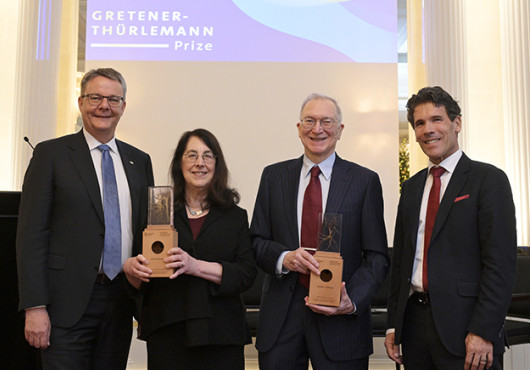
At a glance:
Researchers identify a new player in human immunity that can go rogue and turn the immune system against the body’s own tissues.
The protein, called granzyme K, whose role until now was unclear, drives inflammation and tissue damage in a range of autoimmune and chronic inflammatory conditions.
The findings, based on research in mice and human tissue, may inform new targeted treatments that block harmful immune activation and prevent tissue damage.
The human immune system has a formidable arsenal of defenses to detect and eliminate threats. One of its most powerful guardians is the complement system — a dynamic network of proteins that tirelessly patrols our body, looking ever vigilantly for signs of infection or injury. In the presence of danger, these proteins spring into action, unleashing a cascade of inflammatory signals that mobilizes the body’s defenses to neutralize the threats.
Now, more than 100 years after the complement system was first described, Harvard Medical School researchers at Brigham and Women’s Hospital have discovered a novel mechanism by which this critical defense system can misfire and turn against the body’s own tissues — a protein called granzyme K (GZMK), whose role up until now had remained unclear.
The findings, published Feb. 6 in Nature and enabled in part by federal funding, show that GZMK drives tissue damage and inflammation by activating the complement system against the body’s own tissues — in stark contrast with this system’s well-established role in host defense.
The team also found that GZMK is produced by a special group of immune cells abundant in the inflamed tissues of patients with a wide range of inflammatory diseases, including rheumatoid arthritis, inflammatory bowel disease, and lupus.
The research, which was conducted in mice and human tissue samples, augments the current understanding of this part of immunity, opening new avenues for targeted therapies that could specifically block this harmful pathway in patients with inflammatory diseases.
“Our discovery of a new way of activating the complement system, driven by an enzyme produced by cells that are abundant in inflamed tissues, has important clinical implications,” said study lead author Carlos Donado, HMS instructor in medicine and a postdoctoral fellow in the Brenner lab in the Division of Rheumatology, Inflammation, and Immunity at Brigham and Women’s. “Our work highlights GZMK as a promising therapeutic target to inhibit complement activation across multiple diseases.”
Authorship, funding, disclosures
Additional authors include Aparna Nathan, Karishma Vijay Rupani, Dominique Jones, Madison L. Fairfield, Soumya Raychaudhuri, Fan Zhang, Kellsey P. Johannes, Accelerating Medicines Partnership RA/SLE Network, Daniel F. Dwyer, and co-senior author A. Helena Jonsson.
Brenner is a consultant to GSK, Moderna, AbbVie, Third Rock Ventures, and 4FO Ventures and consultant to and founder of Mestag Therapeutics. Raychaudhuri is a founder of Mestag Therapeutics, a scientific advisor for Janssen and Pfizer, and a consultant to Gilead and Rheos Medicines. Dwyer is a consultant to Celldex Therapeutics.
This work was funded by National Institutes of Health grants (R01 AR073290, R01 AR081792, 5T32AR007098-48), a Rheumatology Research Foundation grant (889234), NIAMS (K08 AR081412), the Rheumatology Research Foundation Investigator Award, the Dermatology Foundation Career Development Award, and by the Accelerating Medicines Partnership® Rheumatoid Arthritis and Systemic Lupus Erythematosus (AMP® RA/SLE) Network in Rheumatoid Arthritis and Lupus Network. AMP is a public-private partnership (AbbVie Inc., Arthritis Foundation, Bristol-Myers Squibb Company, Foundation for the National Institutes of Health, GlaxoSmithKline, Janssen Research and Development, LLC, Lupus Foundation of America, Lupus Research Alliance, Merck & Co., Inc., Sharp & Dohme Corp., National Institute of Allergy and Infectious Diseases, National Institute of Arthritis and Musculoskeletal and Skin Diseases, Pfizer Inc., Rheumatology Research Foundation, Sanofi and Takeda Pharmaceuticals International, Inc.) created to develop new ways of identifying and validating promising biological targets for diagnostics and drug development. Additional funding was provided through grants from the NIH (UH2-AR067676, UH2-AR067677, UH2-AR067679, UH2-AR067681, UH2-1242 AR067685, UH2- AR067688, UH2-AR067689, UH2-AR067690, UH2-AR067691, UH2-1243 AR067694, and UM2- AR067678).



